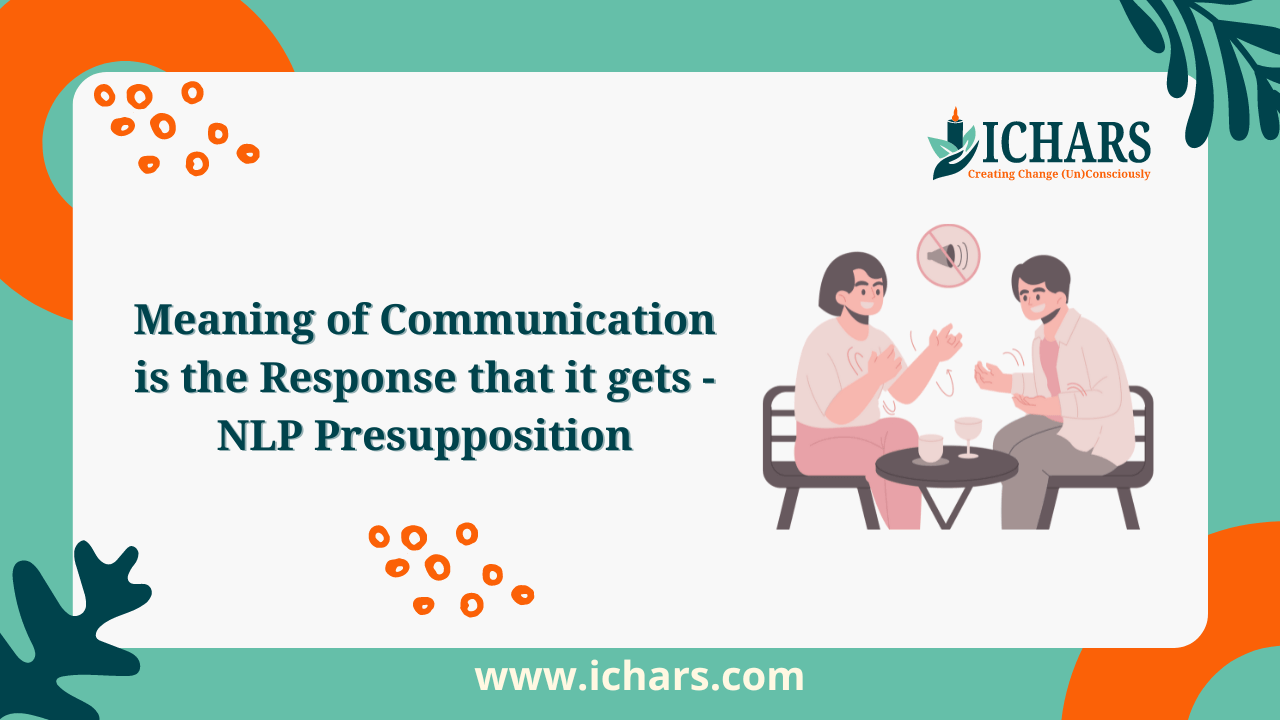Have you ever found yourself in a situation where you thought you communicated something clearly, only to be met with a response that left you perplexed?
Perhaps you’ve been on the receiving end, where someone’s message seemed straightforward, but your interpretation was entirely different. Welcome to the world of communication, where the meaning lies not in the words or actions themselves, but in the response they elicit.
This concept is at the heart of the NLP presupposition – The meaning of communication is the response that it gets. It challenges the notion that communication is a one-way street and emphasizes the importance of understanding how our messages are received and interpreted by others.
The Psychological Basis

This presupposition finds its roots in various psychological theories, including the constructivist approach and the concept of subjective realities. Each individual constructs their own unique reality based on their experiences, beliefs, and perceptions. When we communicate, our messages are filtered through the lens of the receiver’s subjective reality, which can lead to different interpretations and responses.
Meaning of communication is the response that it gets in Action
Let’s illustrate this presupposition with an example. Imagine you’re a coach working with a client who wants to improve their public speaking skills. You provide feedback, suggesting they slow down their pace and make more eye contact with the audience.
However, your client responds by becoming defensive and shutting down. In this case, the meaning of your communication (the feedback) is the response it elicited (defensiveness and withdrawal).
The presupposition extends beyond verbal communication and applies to all forms of interaction, including body language, tone, and nonverbal cues. A simple nod or a raised eyebrow can convey a multitude of meanings, depending on how the receiver interprets it.
Why Psychologists and Coaches should incorporate the presupposition?
For psychologists and coaches, understanding and embracing this presupposition “The meaning of communication is the response that it gets”, is crucial for effective communication and fostering positive change in their clients. By recognizing that the meaning lies in the response, they can tailor their approach, language, and delivery to better resonate with each individual client.
Techniques from Cognitive Hypnotic Psychotherapy (CHP)
Cognitive Hypnotic Psychotherapy (CHP) offers several techniques that can help psychologists and coaches incorporate this presupposition into their practice:

- Calibration: Developing the ability to read and interpret subtle nonverbal cues, allowing you to gauge the client’s response and adjust your communication accordingly.
- Pacing and Leading: Matching the client’s language, tonality, and behaviour (pacing) before introducing new perspectives or suggestions (leading), ensuring effective communication and receptivity.
- Metaphors and Storytelling: Using metaphors and stories to convey messages in a way that resonates with the client’s subjective reality, increasing the likelihood of desired responses.
- Reframing: Helping clients shift their perspective and interpret situations or responses in a more positive or empowering way.
Challenges and Considerations
While embracing the presupposition that the meaning of the communication is the response that it gets, can enhance communication effectiveness, it’s essential to approach it with care and sensitivity. Psychologists and coaches should avoid making assumptions or jumping to conclusions based on a client’s response. Instead, they should foster an environment of open dialogue, actively seeking to understand the client’s perspective and clarifying any misunderstandings.
Additionally, it’s crucial to recognize that some responses may stem from deeper underlying issues or trauma, which require a more nuanced and empathetic approach.
Conclusion
The NLP presupposition “The meaning of communication is the response” that it gets challenges the traditional notion of communication as a one-way process. By understanding that the meaning lies in the response, psychologists and coaches can enhance their ability to connect with clients, foster positive change, and achieve desired outcomes. Embracing this presupposition requires a willingness to adapt, listen actively, and tailor communication to resonate with each individual’s subjective reality.

